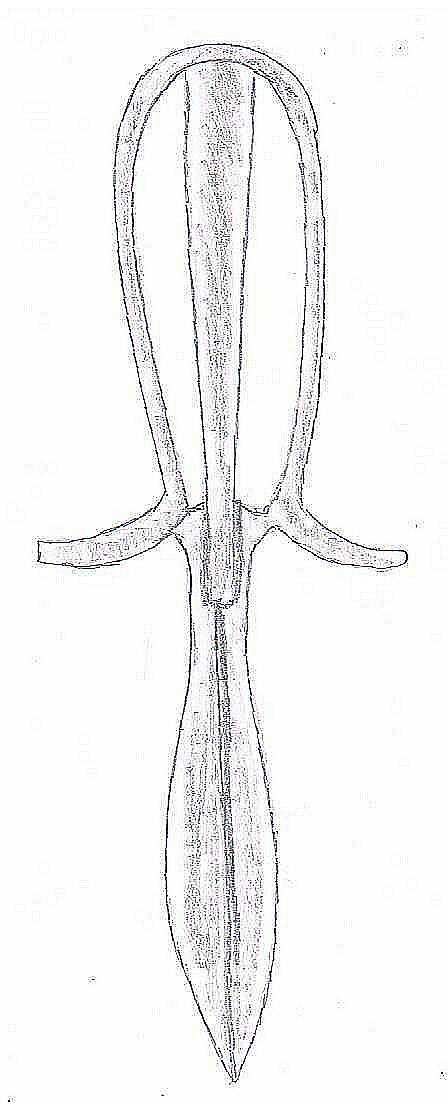French Nail on:
[Wikipedia]
[Google]
[Amazon]



 The French Nail were locally fabricated and converted bayonets, knives and stabbing weapons for use in the
The French Nail were locally fabricated and converted bayonets, knives and stabbing weapons for use in the
Images
{{Knives Daggers Military knives World War I infantry weapons World War I French infantry weapons


 The French Nail were locally fabricated and converted bayonets, knives and stabbing weapons for use in the
The French Nail were locally fabricated and converted bayonets, knives and stabbing weapons for use in the First World War
World War I (28 July 1914 11 November 1918), often abbreviated as WWI, was one of the deadliest global conflicts in history. Belligerents included much of Europe, the Russian Empire, the United States, and the Ottoman Empire, with fightin ...
. These were crude stabbing spikes made by adding a point to a steel stake which had its rearmost section heated and bent into a crude handle.
A more elegant form of the weapon was the introduction of the ''Poignard-Baïonnette Lebel M1886/14''. Approved as a standard military infantry weapon after its development by Lt. Col. Coutrot of the French Army, the ''Poignard-Baïonnette Lebel'' consisted of a long, needle-pointed, stiletto
A stiletto () is a knife or dagger with a long slender blade and needle-like point, primarily intended as a stabbing weapon.Limburg, Peter R., ''What's In The Names Of Antique Weapons'', Coward, McCann & Geoghegan, , (1973), pp. 77-78
The stile ...
-profile blade with wood handle and an integrated knuckle guard made of steel. Originally a conversion of the French ''Épée-Baïonnette Modèle 1886'' (bayonet), and designed strictly as an offensive weapon, the ''Poignard-Baïonnette Lebel'' used a section of the M1886 Lebel' long, narrow stiletto
A stiletto () is a knife or dagger with a long slender blade and needle-like point, primarily intended as a stabbing weapon.Limburg, Peter R., ''What's In The Names Of Antique Weapons'', Coward, McCann & Geoghegan, , (1973), pp. 77-78
The stile ...
-type cruciform blade, designed to quickly kill a surprised enemy soldier with a single deep thrust. Up to three trench knives could be constructed from a single M1886 Lebel bayonet.
Because French industry was working under wartime conditions with numerous material shortages, often using subcontracted labor, even officially sanctioned French Army trench knives tend to vary significantly from knife to knife. The need for knives was so great that already-understrength French Army formations were forced to demobilize hundreds of former cutlery workers so that they could return to their former jobs and begin quantity production of trench knives for the armed forces. As the war went on, newer and more versatile blade-type trench knife patterns such as the double-edged dagger ''Couteau Poignard Mle 1916 ''(often called ''Le Vengeur'') began to replace the ''French Nail'' and earlier stiletto-style trench knives. The French lead in trench knife development was closely followed by the United States, which introduced three successive trench knife models - the M1917, M1918, and Mark I (1918) - all based directly or indirectly upon previous French designs.
References
External links
Images
{{Knives Daggers Military knives World War I infantry weapons World War I French infantry weapons